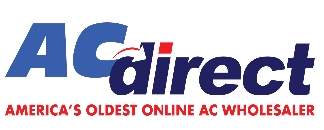New Furnace Costs a Look at the Investement and ROI
-
 By
Michael Haines
By
Michael Haines
- Nov 11, 2023
New Furnace Costs - Looking at the Investment and ROI


Written by Michael Haines 11/11/2023 Examining the costs and the return on investment of new furnace buying.
When winter's chill seeps into our homes, it's the furnace that stands as our frontline defender, pushing back against the cold. But a time comes when even the mightiest furnace needs to be replaced. Let's unravel the costs entwined with purchasing a new furnace, the investment aspect, and how to calculate the return on that investment.
Evaluating Furnace Costs from the Price Tag and Beyond
A new furnace's price can swing widely based on several factors, including the type of furnace, the brand, the capacity, and any additional features. But it's not just the sticker price that homeowners should consider. Installation fees can also vary, especially if there's a need for additional ductwork or other modifications.
Remember, the least expensive option isn't always the most cost-effective in the long run. Efficiency, durability, and the unit’s suitability for your home are essential factors that could affect your bank account more profoundly over time.
The Cost-Savings of High-Efficiency Furnaces
A high-efficiency furnace might cost more upfront, but the ongoing operational savings can be significant. These models are designed to use less fuel for the same amount of heat, meaning your monthly bills will be lower. To quantify this, consider the Annual Fuel Utilization Efficiency (AFUE) rating, which measures how well a furnace converts energy into heat. An increase in AFUE from, say, 80% to 90% doesn't just mean 10% more efficiency; it often translates into hundreds of dollars saved annually, depending on your climate and heating needs.
Calculating Your Return on Investment (ROI)
To accurately gauge the ROI of a new furnace, you'll want to consider both the immediate and long-term financial benefits. These include lower energy costs, reduced repair expenses, HVAC financing, and potential increases in property value.
To calculate the ROI, compare the costs of keeping your current, less efficient furnace (including higher utility bills and maintenance) with the cost of purchasing and operating a new, high-efficiency model over the same period. The savings in energy costs alone can sometimes recoup the initial investment within a few years.
Incentives and Rebates
Government programs, manufacturers, and energy companies often offer rebates or incentives for installing energy-efficient furnaces. These incentives can significantly lower the initial outlay, making a high-efficiency furnace more accessible and boosting the ROI. Homeowners should factor these incentives into their budget planning to take full advantage of any available cost-saving opportunities.
Installation is a Critical Cost Component
The installation cost is more than a necessary evil as it’s an integral part of your investment. A correctly installed furnace operates more efficiently, is less prone to breakdowns, and has a longer life expectancy. Hiring a reputable professional for installation ensures you’re getting the full benefit of your new furnace’s efficiency features. This is absolutely pivotal in realizing those promised energy savings.
The Hidden Value in a New Furnace
Looking beyond the immediate financial layout and energy savings, a new furnace can future-proof your home against rising energy prices. With a more efficient system, you'll be less vulnerable to fluctuations in energy costs. Moreover, there's the intangible yet real benefit of improved comfort. A modern, well-functioning furnace provides consistent warmth and better air quality, factors that contribute to a more comfortable and healthier home environment.
A New Furnace's Impact on Home Value
While a new furnace is a substantial expense, it can also be an asset when it comes to home valuation. Prospective homebuyers often look favorably on homes with newer, high-efficiency systems, which can make your property more attractive in a competitive market. This potential increase in your home's value should be a consideration in the overall assessment of a new furnace's ROI.
Considering the Totality of Costs
While the initial cost of a new gas furnace can be a significant outlay, it's important to consider all the elements that contribute to the total cost of ownership. This includes the initial purchase and installation, ongoing energy costs, maintenance, potential repairs of an older system, and the lifespan of the new unit. So planning for a new furnace purchase should be a deliberate process. Start setting aside funds in anticipation of the replacement to avoid the financial strain when the time comes. This proactive approach allows for careful selection of the right furnace rather than a rushed decision driven by the urgency of a breakdown.
A new furnace represents a major investment that can offer substantial returns through increased efficiency, lower energy costs, and improved home comfort. By understanding all the cost elements and potential savings, homeowners can make informed decisions that balance immediate expenses with long-term financial and comfort gains.

 and now, NASCAR Racing Sponsor
and now, NASCAR Racing Sponsor









